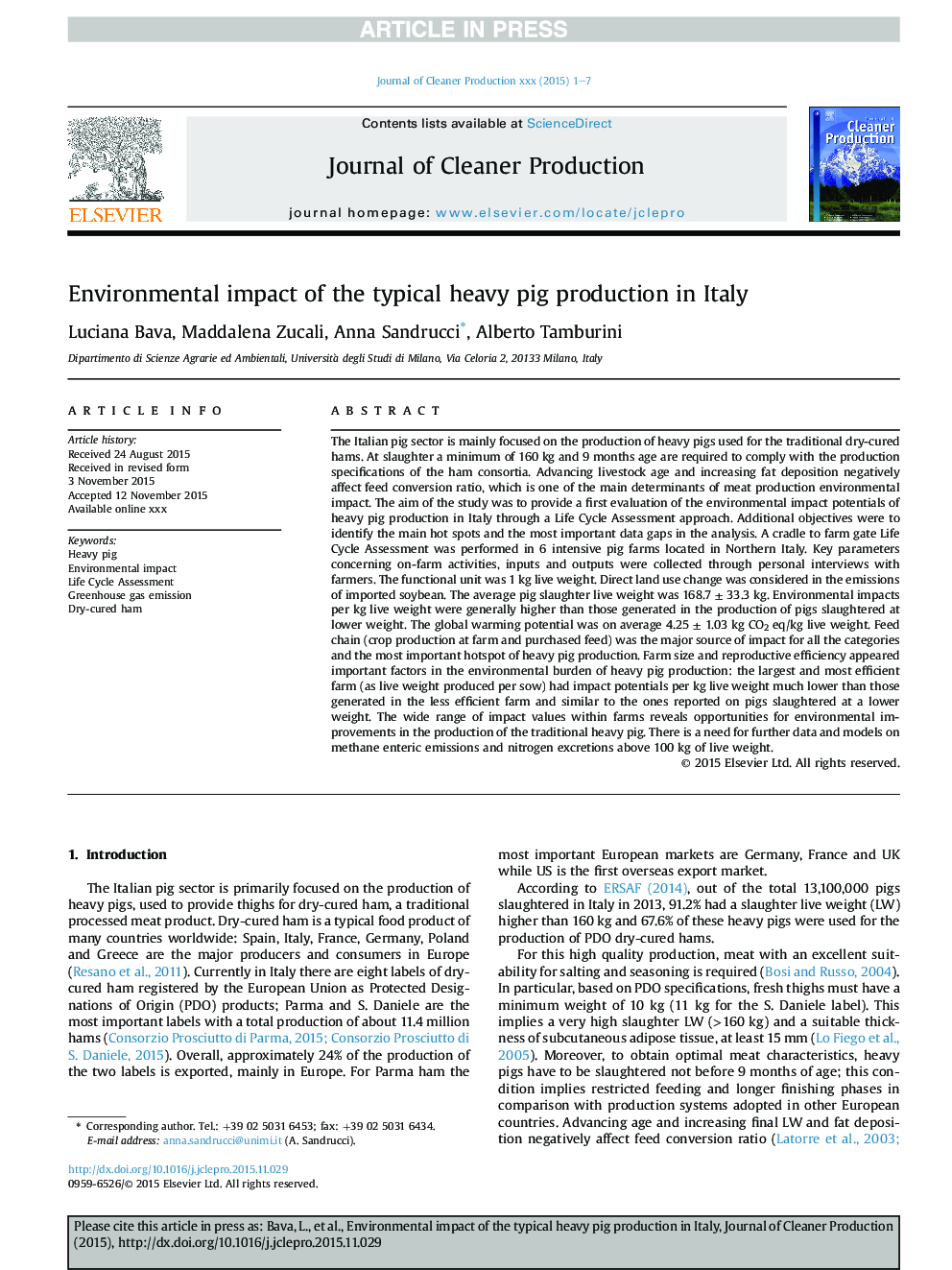| Article ID | Journal | Published Year | Pages | File Type |
|---|---|---|---|---|
| 5481543 | Journal of Cleaner Production | 2017 | 7 Pages |
Abstract
The Italian pig sector is mainly focused on the production of heavy pigs used for the traditional dry-cured hams. At slaughter a minimum of 160 kg and 9 months age are required to comply with the production specifications of the ham consortia. Advancing livestock age and increasing fat deposition negatively affect feed conversion ratio, which is one of the main determinants of meat production environmental impact. The aim of the study was to provide a first evaluation of the environmental impact potentials of heavy pig production in Italy through a Life Cycle Assessment approach. Additional objectives were to identify the main hot spots and the most important data gaps in the analysis. A cradle to farm gate Life Cycle Assessment was performed in 6 intensive pig farms located in Northern Italy. Key parameters concerning on-farm activities, inputs and outputs were collected through personal interviews with farmers. The functional unit was 1 kg live weight. Direct land use change was considered in the emissions of imported soybean. The average pig slaughter live weight was 168.7 ± 33.3 kg. Environmental impacts per kg live weight were generally higher than those generated in the production of pigs slaughtered at lower weight. The global warming potential was on average 4.25 ± 1.03 kg CO2 eq/kg live weight. Feed chain (crop production at farm and purchased feed) was the major source of impact for all the categories and the most important hotspot of heavy pig production. Farm size and reproductive efficiency appeared important factors in the environmental burden of heavy pig production: the largest and most efficient farm (as live weight produced per sow) had impact potentials per kg live weight much lower than those generated in the less efficient farm and similar to the ones reported on pigs slaughtered at a lower weight. The wide range of impact values within farms reveals opportunities for environmental improvements in the production of the traditional heavy pig. There is a need for further data and models on methane enteric emissions and nitrogen excretions above 100 kg of live weight.
Related Topics
Physical Sciences and Engineering
Energy
Renewable Energy, Sustainability and the Environment
Authors
Luciana Bava, Maddalena Zucali, Anna Sandrucci, Alberto Tamburini,
